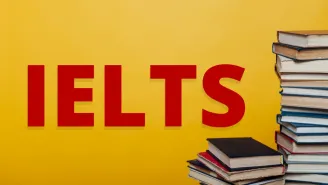Bioluminescence Reading Passage
Bioluminescence Reading Passage
Paragraph A
In the pitch-black waters of the ocean's aphotic zone – depths from 1,000m to the seafloor - Rood eyesight does not count for very much on its own. Caves, in addition, frequently present a similar problem: the complete absence of natural light at any time of the day. This has not stopped some organisms from turning these inhospitable environments into their homes, and in the process, many have created their own forms of light by developing one of the stunning visual marvels of the biological universe -bioluminescence.
Paragraph B
Many people will encounter bioluminescence at some point in their life, typically in some form of glowworm, which is found on most continents. North and South America are home to the "firefly", a glowing beetle which is known as a glow-worm during its larvae stage. Flightless glowing beetles and worms are also found in Europe, Asia, Australia, and New Zealand. Less common flies, centipedes, molluscs, and snails have bioluminescent qualities as well, as do some mushrooms. The most dramatic examples of bioluminescence. However, are found deep below the ocean's surface, where no sunlight can penetrate at all. Here, anglerfish, cookie-cutter sharks, flashlight fish, lantern fish, gulper eels, viperfish, and many other species have developed bioluminescence in unique and creative ways to facilitate their lives.
Paragraph C
The natural uses of bioluminescence vary widely, and organisms have learnt to be very creative with its use. Fireflies employ bioluminescence primarily for reproductive means – their flashing patterns advertise a firefly's readiness to breed. Some fish use it as a handy spotlight to help them locate prey. Others use it as a lure; the anglerfish, for example, dangles a luminescent flare that draws in gullible, smaller fishes which get snapped up by the anglerfish in an automated reflex. Sometimes, bioluminescence is used to resist predators. Vampire squids eject a thick cloud of glowing liquid from the tip of its arms when threatened, which can be disorientating. Other species use a single, bright flash to temporarily blind their attacker, with an effect similar to that of an oncoming car which has not dipped its headlights.
Paragraph D
Humans have captured and utilized bioluminescence by developing, over the last decade, a technology known as Bioluminescence Imaging (BLI). BLI involves the extraction of a DNA protein from a bioluminescent organism, and then the integration of this protein into a laboratory animal through trans-geneticism. Researchers have been able to use luminized pathogens and cancer cell lines to track the respective spread of infections and cancers. Through BLI, cancers and infections can be observed without intervening in a way that affects their independent development. In other words, while an ultra-sensitive camera and bioluminescent proteins add a visual element, they do not disrupt or mutate the natural processes. As a result, when testing drugs and treatments, researchers are permitted a single perspective of a therapy's progression.
Paragraph E
Once scientists learn how to engineer bioluminescence and keep it stable in large quantities; a number of other human uses for it will become available. Glowing trees have been proposed as replacements for electric lighting along busy roads, for example, which would reduce our dependence on non-renewable energy sources. The same technology used in Christmas trees for the family home would also eliminate the fire danger from electrical fairy lights. It may also be possible for crops and plants to luminesce when they require watering, and for meat and dairy products to "tell us” when they have become contaminated by bacteria. In a similar way, Forensic investigators could detect bacterial species on corpses through bioluminescence. Finally, there is the element of pure novelty. Children's toys and stickers are often made with glow-in-the-dark qualities, and a biological form would allow rabbits, mice, fish, and other pets to glow as well.
Bioluminescence Reading Questions & Answers
Discover exciting and informative IELTS reading answers about Bioluminescence.






